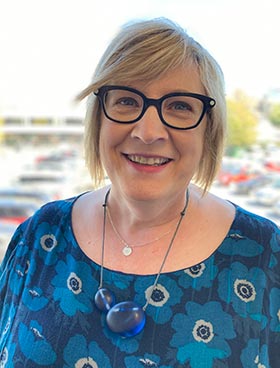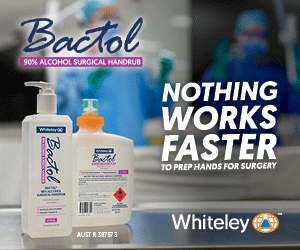
“Radical change” is needed if nurses are to fulfil the mandate of the International Nurses Day (IND) theme: Nurses: A voice to lead – transforming the next stage of healthcare.
A group of directors of nursing (DoNs) from across Canterbury District Health Board (CDHB) met with Kai Tiaki Nursing New Zealand last month to consider the IND theme. What emerged was the need for radical change in funding, in power structures within health, in nursing education, in service integration and in how nursing is viewed, both within the health system and by the public.
What also emerged was the frustration these DoNs feel at the ongoing underfunding and undervaluation of nursing nationally and the pressure that places on nurses and those they care for. Other frustations include the continual ignoring of the nursing voice at decision-making tables (the transition unit to implement the review of the health and disability system appears not to include a nurse), the gap between the rhetoric of health policy and the reality of practice and the continuation of competitive funding models that create significant barriers to accessing care.
How to achieve radical change?
But how to achieve the radical change needed and how to overcome the barriers to nursing assuming its rightful place at every health decision-making table did not emerge so readily.
Current and looming nursing shortages, historical power structures in health, ongoing health inequities and the importance of the Māori nursing workforce in ameliorating these, nursing education responsibilities, the impact of digital technologies and the actual nature and location of nursing work all must be considered when pondering the future of the profession.
And defining nursing leadership can often be problematic. Specialist mental health DoN Joan Taylor said all nurses were leaders “within their own families, their communities and in workplaces”. Others agreed and acknowledged that DHB nursing leaders were part of a bigger system, which was not just hospital-based.
All agreed with Ashburton and rural health DoN Brenda Close’s contention that they did their jobs “so frontline staff can do their jobs”; ideally that they were not so caught up “in daily stuff” and had the space to strategise. But all admitted that the space to strategise was, in reality, too often filled with fighting battles on behalf of frontline staff and with navigating the complexities and demands of the system itself.
Last year, the DoNs decided to focus on developing new nursing leadership as part of celebrating the World Health Organization’s International Year of the Nurse and Midwife. They decided to implement the Nightingale Challenge, a global initiative to ensure the development of nurses able to meet future leadership challenges, locally. The Nightingale Challenge, launched by Nursing Now in 2019, aims to develop the leadership skills of early-career nurses. Nursing Now is a global campaign to improve health by raising the status and profile of nursing and operates under the auspices of the International Council of Nurses.
CDHB has chosen 16 nurses from across the DHB, who are all under 35, to be part of the challenge. There are also eight nurses in community and primary health care undertaking the challenge. These nurses attend senior nursing and midwifery meetings and governance meetings. They are also undertaking postgraduate study and professional development in leadership and are being mentored by senior nursing leaders. They have all undertaken a quality improvement project which has taught them how they can create institutional change and make a difference.
Empowering nurses
Recently-appointed executive DoN Becky Hickmott said the nurses were being empowered to drive change and a priority was to ensure the nursing voice was at every decision-making table.
“We want them to be involved in decision-making, to have a political voice, to understand governance. Many of these 16 nurses have told us they had no idea of the scope of senior nursing leadership roles and that is something that has emerged for us – that nursing leadership decisions are often invisible,” she said.
The initiative would continue, regardless of whether there was specific funding for it.
All know that courage is needed to tackle the status quo within health, otherwise current inequities and power structures will continue.
“If we continue to do what we have always done, we are not going to see the changes that are needed. Radical change is needed, otherwise we will perpetuate the current system which is not working for many people, notably Māori and Pacific people and other vulnerable populations,” Close said. “We have always been predominantly focused on tertiary hospital settings and have not invested enough in other spaces and that message has to be shared at a political level.”
Hickmott said, politically, the time had never been better to push that message. “Strategising through a nursing lens, the review [of the health and disability system] is timely. It may provide the impetus for keeping people in the community and ensuring resourcing.”
Some hope of change
All felt the review report (commonly referred to as the Simpson Report), offered some hope of change, but that a change in power structures – “the structures have been established around the needs of medicine”, as one put it – was essential to release the full potential of nursing. And that would not be easy.
Hickmott said the value of being politically connected could not be underestimated. “Our medical colleagues have done that well. Generations of wonderful nurses have not yet managed to shift that basic power differential.”
Christchurch Campus DoN Lynne Johnson cited the difficulties of enabling nurse-led discharge at the weekends. The situation reflected the difficulties of changing the status quo and navigating power dynamics, combined with underfunding. Effective, safe nurse-led discharge, when medical staff were not available, depended on adequate resourcing and on adequate resourcing of community agencies. While the negotiations to enable it had taken place, a lack of resourcing created barriers to its success.
Different doors to push through
Close believed the heath and disability review provided some opportunities for nurses “to have different conversations and for different doors to open and for nurses to push through them”.
Equity in health care was now on every agenda and would remain so well into the future. But how to measure progress was more difficult. “We have to be doing something other than talking about equity,” Close said. Māori nurses felt obliged “to talk in that space” but the onus was on all nurses to fight for equity.
The DoNs pondered how to ensure nurses were able to “get into spaces where we can make the difference”.
Close said nurses didn’t have enough power, as their voice was not heard where it needed to be heard. Hickmott agreed. “We are the right people to be at the table but how to get the invitation can be difficult. Decisions are being made without us. Everybody should be at the table, but the fact nurses, the biggest workforce in health, are not continues to surprise me,” she said.
All the DoNs agreed nurses had the power to mobilise, thus had the power to drive change but were often their own worst enemies. “If we decided to pull the plug, the system would come crashing down. But nurses are very reluctant to do that because they feel strongly that they are ‘here for patients and for whānau’,” Close said.
We have fantastic staff who just give and give and give, so we just ask and ask and ask. But there will come a point when nurses will say ‘we can’t do this anymore.’

And all the DoNs acknowledged the reality of current nursing shortages and the immense stress nurses were under because of short staffing. “We have fantastic staff who just give and give and give, so we just ask and ask and ask. But there will come a point when nurses will say ‘we can’t do this anymore’,” Johnson said.
The pressure on nurses was evidenced in high sick leave and high Accident Compensation Corporation claims, Hickmott said.
All believed care capacity demand management (CCDM) was an “empowering tool” for nurses and nursing. “It is a powerful tool to describe the care delivered. We can use the data derived from CCDM to tell our stories. Data is heard at the board table, rather than stories,” CCDM nursing director Janette Dallas said.
It was essential that CCDM data be utilised because nurses’ stories of chronic short staffing had not been heard without accurate data to back them up.
Dallas said nurses were “a little cynical” about CCDM, but “once we start to see some outcomes, they may start to understand the value in the programme”.
How to attract and retain people to the profession was a complex issue which all DoNs were grappling with. CDHB nursing leaders had invited career counsellors from secondary schools around the region to a workshop on nursing. The feedback from counsellors indicated some understood the scope of nursing, but others were surprised at the career options within the profession. And the DoNs also felt the public perception of nursing needed to change.
DoNs had “significant roles to play moving forward, if we can continue to attract people into nursing and foster them through”, Close said.
The shock between education and clinical reality remained and the unrelenting pressure in the clinical environment was having an impact on all health providers’ ability to retain nurses.
Nursing education also had an important role to play. Taylor said undergraduate education was not providing what was needed for mental health, addictions, and intellectual disability.
Hickmott said relationships with the education sector locally were well established, but nursing leaders had to drive the needed changes and to exert their influence at a national level. “What are the education requirements for the future and how can we enable the workforce to work differently to provide health care into the future?” she asked.
The shock between education and clinical reality remained and the unrelenting pressure in the clinical environment was having an impact on all health providers’ ability to retain nurses, she said.
The ageing workforce in nursing education mirrored the ageing workforce in clinical practice.
“We want education to be producing resilient nurses, with critical thinking abilities and who are able to work in stressful environments – that’s a tough ask for our academic colleagues,” Dallas said.
The importance of boosting the Māori and Pacific nursing workforces was also on the minds of the DoNs. CDHB has increased its intake of Māori and Pacific new nursing and midwifery graduates this year. How Māori and Pacific new graduates were recruited was examined and training on perceived or unintentional bias was undertaken. In this year’s nurse-entry-to practice/specialist practice programmes, 13 Māori and five Pacific graduates were employed, the biggest in a single intake. “We have managed to turn this equity issue around and will work at continuing to drive the message home,” Hickmott said.
But it was “outrageous” that nursing leaders had to contest for funding nationally to provide cultural support for local Māori and Pacific nurses in their new graduate and postgraduate education.
It also “beggared belief” that the funding model for this education hadn’t been adjusted by Health Workforce New Zealand since 2011, even though course prices had dramatically increased.
Other threads to emerge from the conversation included:
- The importance of having community, primary health care and private hospital leaders’ input to ensure the whole health system ran effectively and the need to break down silos within the wider system.
- The importance of service integration. While work had been done in this area, more was needed.
- The ability of primary health care to transform care delivery. “Bits of that are happening already but not enough of a collective move to create the swell which is needed across the nation,” Close said.
- The impact of COVID-19: “Is this our new normal?” acting nurse manager of nursing workforce development Jacinda King asked. While its impact on patients and staff was immediate and ongoing, it would also have a long-term impact on future planning.
- Mental health had never considered the need for negative pressure rooms before the pandemic. While Christchurch campus had a new building, the design principles for pandemic areas 10 years ago are not what is required for COVID-19. Future designs will have to take a different approach to airflow, to enhance negative pressure capacity.
- The continuing movement of care into the community, but the importance of remembering there would always be a cohort of very unwell and/or very old people who needed a lot of care. A workforce was needed that could provide that care in hospitals.
- The increasing and continuing pressure on staff, with patient volumes and acuity increasing. If the population in Canterbury stays as it is, all beds in the new Christchurch Hospital would be filled up within a few years, Johnson said. It requires a whole-of-system response to address this.
- The increasing demand for mental health care for children who experienced the earthquakes.
- The plethora of nursing groups – many of which held similar views – potentially diluted the nursing voice.
- The increasing opportunities for nurses, eg nurse prescribing initiatives and the nurse practitioner pathway.
While the DoNs acknowledged there was pressure everywhere in the system and there was no miracle cure for that, they believed “calm, steady, professional leadership” had got people through in the past and would continue to do so.
“Nurses in Canterbury are not unfamiliar with disasters and we will continue to provide that leadership,” Hickmott said.
Nursing leaders would continue to fight for inclusion and influence, and to build the capacity and capability of the workforce.
Similar difficulties
The difficulties nursing leaders have in influencing change at the highest levels are in many ways similar to those of nurses at the coalface. While the particulars may be different, the forces behind the challenges – primarily underfunding and rigid power structures – are the same.
While the IND theme can only ever be viewed as aspirational, the struggles of nurses to achieve it – whether at the bedside or in the boardroom – are very real.




